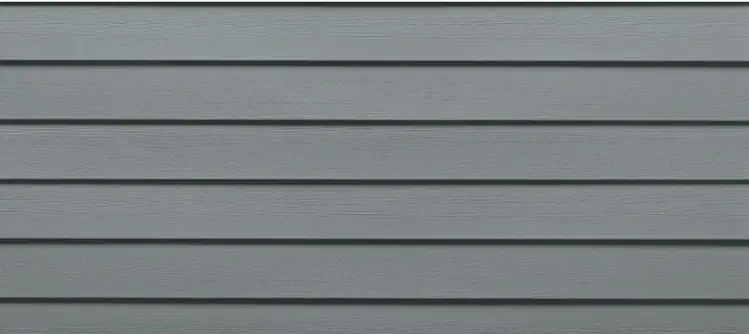Pros and Cons of Vinyl Siding
- Apex Life LLC

- Mar 13, 2023
- 4 min read
As a homeowner, one of your top priorities is ensuring that your property is well-maintained and aesthetically appealing. One way to achieve this is to install vinyl siding. This type of siding has become increasingly popular among homeowners due to its numerous benefits. However, as with any home improvement project, vinyl siding has its pros and cons. In this article, I will delve into the advantages and disadvantages of vinyl siding, the various styles available, and alternative options that you can consider.
The Pros of Vinyl Siding
Vinyl siding is a popular choice for homeowners due to its many benefits. Here are some of the advantages of installing vinyl siding on your home:
Affordability: Vinyl siding is one of the most affordable siding options on the market. It is less expensive than other materials such as wood, brick, and stone. This makes it an ideal choice for homeowners who are on a tight budget.
Low Maintenance: Unlike other siding materials, vinyl siding requires very little maintenance. It does not require painting or staining, and it does not rot or warp. Simply wash it down with a hose to keep it clean.
Durability: Vinyl siding is made from PVC, which is a highly durable material. It can withstand harsh weather conditions, such as extreme heat, cold, and wind. It is also resistant to insects and pests, which can cause damage to other siding materials.
Energy Efficiency: Vinyl siding can help you save on your energy bills. It provides insulation that helps keep your home warm in the winter and cool in the summer. This makes it an ideal choice for homeowners who want to reduce their energy consumption and save money.
Versatility: Vinyl siding is available in a wide range of colors, textures, and styles. This means that you can choose a design that matches your preferences and complements the architecture of your home.
The Cons of Vinyl Siding
While vinyl siding has many benefits, it also has some downsides. Here are some of the disadvantages of vinyl siding:
Environmental Impact: Vinyl siding is made from PVC, which is a synthetic material. The production of PVC is associated with the release of toxic chemicals into the environment. Additionally, PVC is not biodegradable, which means that it will take hundreds of years to decompose in a landfill.
Limited Lifespan: While vinyl siding is durable, it has a limited lifespan. It typically lasts between 20 and 30 years, which is less than other siding materials such as brick and stone.
Susceptibility to Damage: Vinyl siding can be susceptible to damage from impact, such as hail or tree branches. If it is damaged, it can be difficult to repair, and you may need to replace the entire panel.
Not Suitable for High Temperatures: Vinyl siding can warp or melt if it is exposed to high temperatures. This means that it may not be suitable for homes in areas that experience extreme heat.
Not Eco-Friendly: While vinyl siding is recyclable, it is not biodegradable. This means that it will take hundreds of years to decompose in a landfill. Additionally, the production of vinyl siding is associated with the release of toxic chemicals into the environment.
Styles of Vinyl Siding
Vinyl siding is available in a wide range of styles. Here are some of the most popular styles:
Horizontal Lap Siding: This is the most common style of vinyl siding. It is installed horizontally, with each panel overlapping the one below it. This creates a traditional look that is suitable for most homes.

Vertical Siding: This style of vinyl siding is installed vertically, with each panel overlapping the one next to it. This creates a modern look that is suitable for contemporary homes.

Board and Batten Siding: This style of vinyl siding features vertical panels that are separated by narrow strips called battens. This creates a rustic look that is suitable for homes with a country or cottage-style architecture.

Shingle Siding: This style of vinyl siding is designed to mimic the look of cedar shingles. It is installed in overlapping rows, with each row offset from the one below it. This creates a classic look that is suitable for traditional homes.

Alternatives to Vinyl Siding
While vinyl siding is a popular choice for homeowners, it is not the only option available. Here are some alternatives to vinyl siding:
Fiber Cement Siding: This type of siding is made from a mixture of cement, sand, and cellulose fibers. It is highly durable, fire-resistant, and insect-resistant. It is also available in a wide range of styles and textures.
Wood Siding: This is a classic siding material that has been used for centuries. It is available in a variety of styles, including clapboard, shingles, and shakes. However, it requires regular maintenance, such as painting and staining, to prevent rot and insect damage.
Brick Siding: This is a highly durable siding material that can last for centuries. It is also fire-resistant and low-maintenance. However, it is expensive and requires professional installation.
Stone Siding: This is a natural siding material that is highly durable and fire-resistant. It is also low-maintenance and available in a variety of styles and textures. However, it is expensive and requires professional installation.
Conclusion
In summary, vinyl siding has its pros and cons. While it is affordable, low-maintenance, and durable, it is also associated with environmental concerns and has a limited lifespan. However, it is available in a wide range of styles and is a versatile option for homeowners. If you are considering vinyl siding for your home, it is important to weigh the pros and cons before making a decision. Additionally, there are alternative siding options available that you may want to consider. Remember to consult with a professional before starting any home improvement project.




Comments